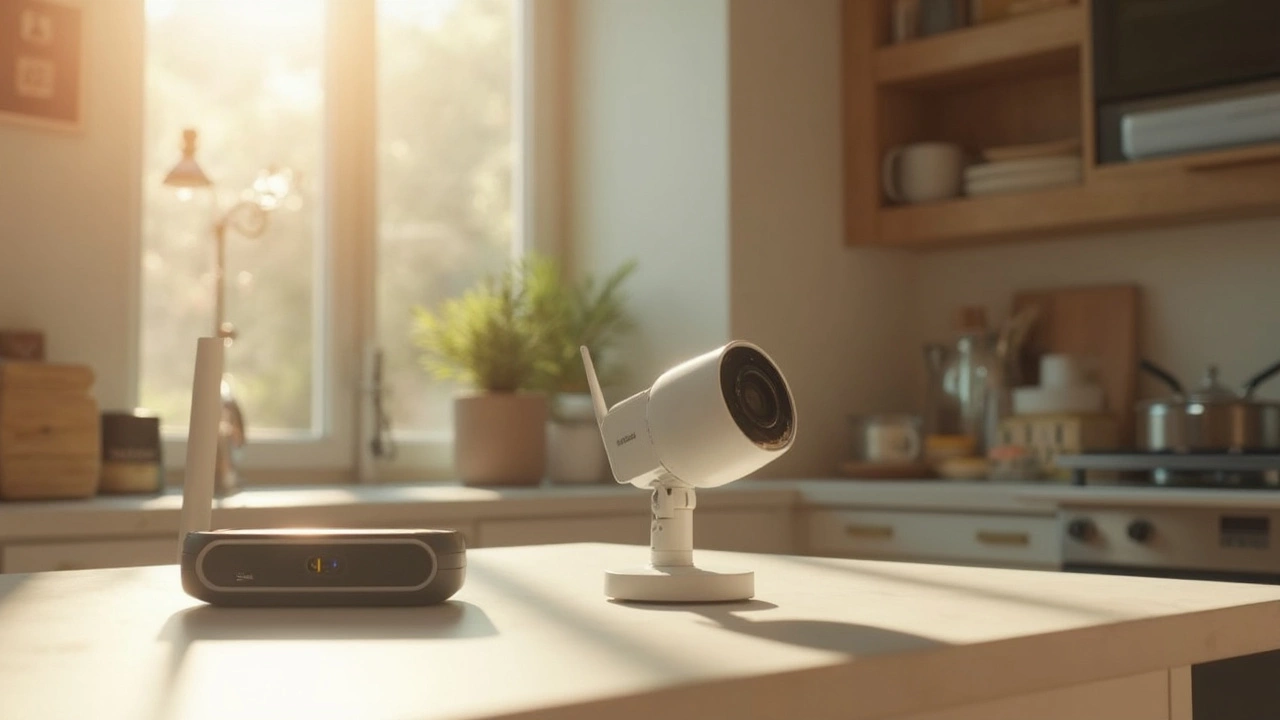Thinking about ditching cables and getting a camera that talks to your phone? Wireless cameras are the go‑to choice for many homeowners right now. They give you live video without drilling a wall for a power line, and most models run on battery or solar power, so you can place them almost anywhere.
At the core, a wireless camera captures video and sends it over a Wi‑Fi network to the cloud or a local hub. The camera itself has a built‑in radio that talks to your router, so you need a decent signal where you plan to mount it. Power can come from a plug, a rechargeable battery, or a solar panel. When the battery runs low, most units send a low‑battery alert to your phone, so you never lose coverage by accident.
Start with the area you want to watch. Outdoor spots need weather‑proof housing and often an infrared (IR) night‑vision LED. Indoor rooms can get away with smaller lenses and no night‑vision if you have enough light. Next, check the video quality—1080p is standard, but 4K models are dropping in price and give sharper detail for facial recognition. Storage matters too: cloud plans add a monthly fee, while SD‑card options keep everything local.
Privacy is a big concern, so pick a camera that offers end‑to‑end encryption. Look for two‑factor authentication on the companion app and the ability to disable audio recording if you don’t need it. Also, beware of hidden Wi‑Fi security protocols; always use WPA3 or at least WPA2 with a strong password.
Installation is usually a matter of mounting the bracket, plugging in power (if required), and following the app’s setup wizard. Most apps guide you through connecting the camera to your home network, naming the device, and setting motion zones. Adjust the motion sensitivity so you get alerts for real activity and not every passing cat.
Maintenance is simple: keep the lens clean, replace batteries or clean solar panels yearly, and check firmware updates monthly. Updates often patch security holes and improve performance, so don’t skip them.
In short, wireless cameras give you flexibility, easy monitoring, and a solid layer of protection for your home. Pick a model that matches your environment, secure the Wi‑Fi connection, and you’ll have peace of mind without the mess of cables.

Ever wondered if your wireless security cameras require a DVR? This article dives into what a DVR does, how it works with wireless cameras, and if it’s necessary for your home setup. We’ll discuss the benefits and drawbacks of using a DVR with wireless systems and offer practical tips to help you decide the best path for your security needs. Often, technology moves fast, and it’s easy to feel left behind, so we’re here to clear things up.

Wireless cameras are increasingly popular in smart homes, leading to questions about their impact on Wi-Fi consumption. These devices connect to your home's network to stream and store footage, which can affect your bandwidth. Understanding how these cameras use Wi-Fi and managing their activity can help you optimize network performance. Discover practical tips to reduce Wi-Fi strain while maintaining robust home security.